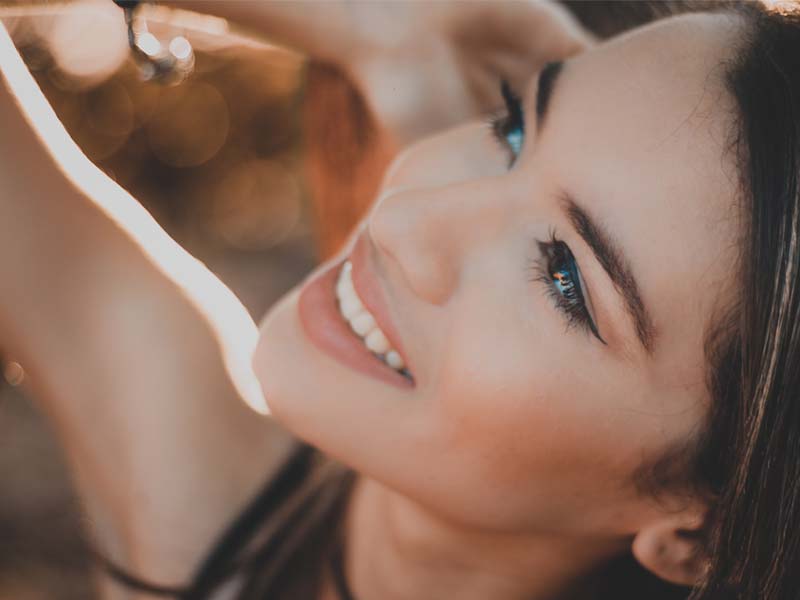
by administrator | Sep 4, 2019 | Skin Care
While hyperpigmentation may be the overarching medical term for liver spots or “pregnancy mask,” we know this fancy name does not make these conditions any easier to handle. In fact, melasma, the clinical term for pregnancy mask might be worse than all those sleepless nights or trying to lose that stubborn baby weight. It is hormonally aggravated and difficult to treat, not to mention what it can do to a new mom’s self-esteem. Read on for helpful hints to rid yourself of unwanted hyperpigmentation.
What is Hyperpigmentation?
Any excess melanin, also known as pigment, that collects in the skin, whether it be on the face, hands or elsewhere on the body, is referred to as hyperpigmentation. A freckle is an example of focal hyperpigmentation while melasma is an example of diffused hyperpigmentation. Either condition is not generally harmful. Yet, there are a few specific health concerns that contribute to the diffused form such as vitamin deficiencies and Addison’s disease. More likely, sun exposure, aging, prescribed medications, scars, or cuts in the healing process are the sources.
However, know that there are some factors out of your control that predispose you to hyperpigmentation. A birthmark (also hyperpigmentation) is hereditary. Increased estrogen or fluctuating hormones can be the culprit, and so can birth control pills or cancer medications. Even acne can leave scars that promote skin darkening. You may not be able to prevent hyperpigmentation from happening, but you can understand it and get treatment.
Out, Darn Spot!
No matter the cause or condition underlying your personal experience with hyperpigmentation, we understand that when it comes to your face, no spot, regardless of size, is welcome, especially when it was not there before and has suddenly appeared seemingly out of nowhere. From liver spots to freckles sprinkled on your forehead, there is hope. All it takes is a little research about what treatment works best for you.
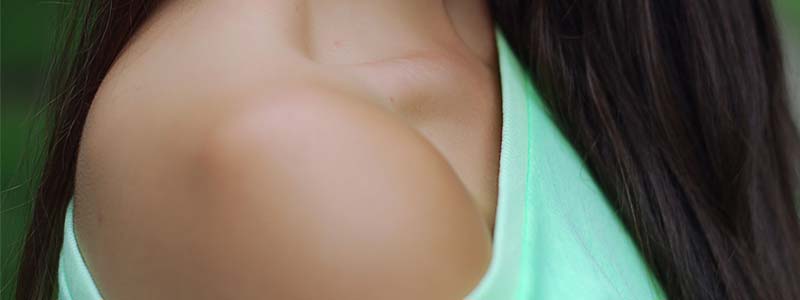
What are Hyperpigmentation Treatment Options?
Staying out of the sun, addressing skin infections, having a good skin care routine and eliminating medications can reduce hyperpigmentation, but they may not get rid of it.
Creams
Often, the first line of defense is a topical cream. Topical creams containing hydroquinone (a skin lightener), kojic acid (inhibits tyrosine formation and prevents melanin production) and other ingredients like vitamin C can work, but they are not without side effects. Some people experience rashes, stinging, dermatitis or even a worsening of symptoms. When these solutions fail, we know that people can become desperate to find another way.
Chemical Peels & Dermabrasion
If creams don’t work, another possible hyperpigmentation treatment method is chemical peels that use ingredients like glycolic or salicylic acid to coax exfoliation on the top layers of skin where the pigmentation is darkest. Certain skin types and colors are better suited for this treatment protocol. In rare instances, peels can lead to scarring.
An alternative to peels is dermabrasion to control hyperpigmentation. In this treatment (whether doing dermabrasion or microdermabrasion), the skin is being injured to encourage new skin growth and to stimulate the healing process. A 50% improvement in skin appearance is considered a satisfactory result, but we understand if it is not your idea of a winning solution. This method also comes with after-effects including redness, peeling, and pain that can occur for weeks or months before full recovery. You will also need to avoid all sun exposure to eliminate risk of further injury.
Intense Pulsed Light Therapy
What else can you do? The best treatment is often the most direct and simple. We prefer and recommend intense pulsed light therapy. This treatment uses lasers to direct bursts of light on your affected skin. This stimulates the body’s natural healing process, which results in lightening of the dark areas in less than 30 minutes. Plus, over time, the lightening process continues. The treatment is quick, painless, relaxing and effective. Affected areas will simply dry up and slough off like a healing sunburn. Light therapy is also customized for you specifically by measuring your melanin levels before the procedure.
What Can You Expect with Intense Pulsed Light Therapy?
If you choose this method, we will walk you through each step of the process to ensure a safe and comfortable experience. The treatment is usually only the length of a lunch break and will not require you to stay home or hide from people to recover. The device we use feels cool to your skin, and clients have actually told us they find it relaxing.
Enjoying the experience of your hyperpigmentation treatment should be part of the healing process, and with all the benefits of this noninvasive technique, we think it is the best approach. Contact us today to make an appointment.
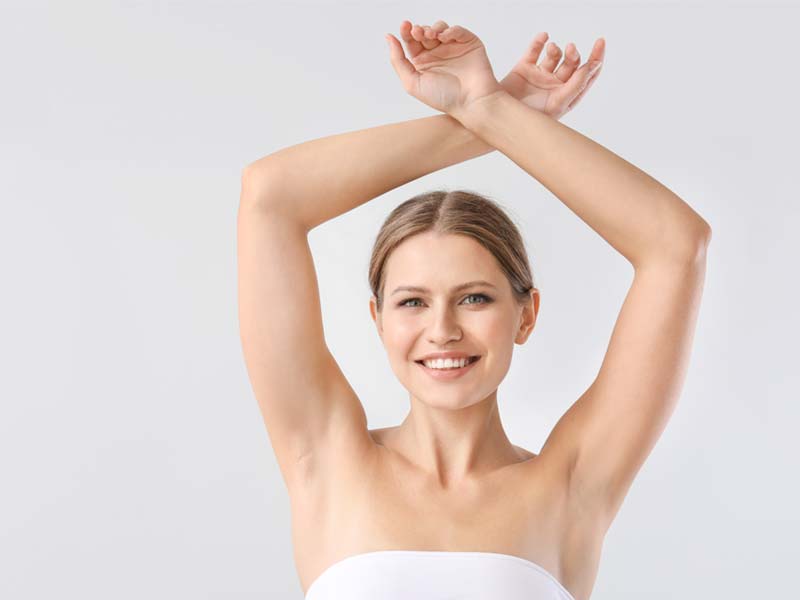
by administrator | Jul 24, 2019 | Skin Care
Many patients ask us, “how does laser hair removal work?”, but often, what they really want to know is this: “is laser hair removal safe and effective, and will it work on me?” Laser hair removal may sound like a scary procedure that includes shooting a laser gun, like something out of a spy movie, at your skin. This is far from what laser hair removal actually looks like though.
Laser hair removal is becoming quite popular, and when you learn about the effectiveness of how it works, it’s easy to see why. Here, we’ll answer your questions, so you can make the best decision for your lifestyle and your skin.
Safety
Obviously, the big question to ask anytime you try a new skin treatment is whether or not it’s safe. Your skin is what everyone sees when you are out in the world. The “laser” in laser hair removal usually frightens people because it sounds damaging. The truth is, the lasers used in laser hair removal are highly effective at targeting hair follicles only and leaving the rest of your skin undamaged.
All lasers used for hair removal used at our clinic are highly regulated by the FDA to ensure their safety.
Hair removal lasers are called “lasers” because they generate very concentrated light. This specialized light is absorbed by your hair follicles, which generate the light into heat energy. The heat damages the follicle of your hair that is responsible for hair growth. This targeted damage of the hair follicle is what removes your unwanted hair and reduces the possibility of the hair growing back. Hair removal lasers are made to target the melanin in hair. Melanin is the substance that gives your body hair its color. The contrast between the melanin and your skin is how the laser targets the hair from the shaft down into the follicle.
Because laser hair removal works by reducing your hair follicles’ ability to regrow hair, it needs to be done slowly. Part of the safety of this process comes from the fact that the procedure is done over time so the laser’s level is low enough to damage just the hair follicles and not the surrounding skin.
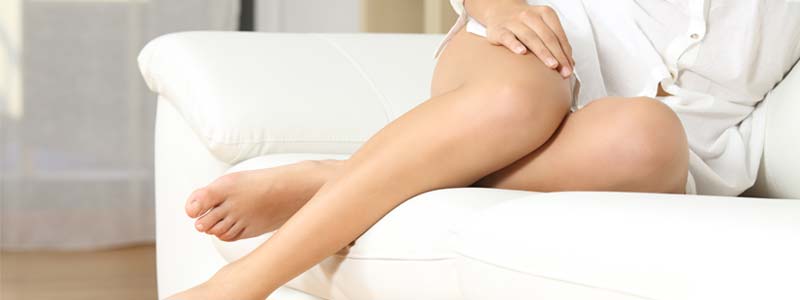
Investment
Laser hair removal requires an investment of your time; however, it’s fairly cost effective when you consider how long you can expect the results to last. When evaluating whether or not laser hair removal is a good option for you, consider how much time and money you spend on your current hair removal method. For example, if you shave your legs, try tracking how many minutes you spend shaving in a week. Then calculate how many razor-head replacements you use in a week. Then multiply this cost by the weeks and months in a year so you have the current, annual cost of your hair removal.
The Time Investment
The procedure of laser hair removal can take anywhere from 2-6 sessions, depending on your individual skin and hair. The length of each session depends on how large of an area you are removing hair from. Small areas like the upper lip or the armpits can take 5-15 minutes, whereas larger areas like legs or your back can take closer to an hour per session.
Between sessions, you can expect to wait between 4-6 weeks. This is because hair grows in cycles and the laser is most effective at killing your hair when it’s in an active growth phase. One of the biggest mistakes people make when it comes to laser hair removal is going to a couple of sessions, seeing a reduction in their hair growth, and then not coming in for their remaining sessions. What’s actually happening when you see this initial reduction of your hair growth could be that your hair is just in a dormant period and will re-grow quickly again once this cycle is over. That’s why it’s important to go to the recommended number of sessions.
The Financial Investment
The average cost of laser hair removal is in the $300-$500 range. However, this varies quite a bit depending on how large of an area you’re removing hair from and how many sessions your hair requires. Many facilities, include Camas Swale, have financing options available for aesthetic treatments. The best way to know how much you can expect to spend on your laser hair removal service is to get a free consultation.
The upfront cost of this hair removal method can seem high. However, laser hair removal is expected to be effective for months to years of smooth skin at a time. If you consider the amount of money you currently spend on shaving or waxing and multiply that over months and years, the cost is likely comparable to what you’ll pay as a one-time fee for laser hair removal.
You may be asking, if laser hair removal works so well and is so cost-effective, why isn’t everyone doing it? The reality is there are a lot of misconceptions about laser hair removal that turn people off of it.
How to Prepare
There are things to do to prepare your skin for a healthy laser hair removal session as well as to care for you skin after each of your sessions. Talking to a professional about your hair removal options is the best way to make a final decision about whether you should commit to laser hair removal.
Want to know more? Schedule a consultation with us today. We will happily answer all your questions and provide you with a personalized assessment.
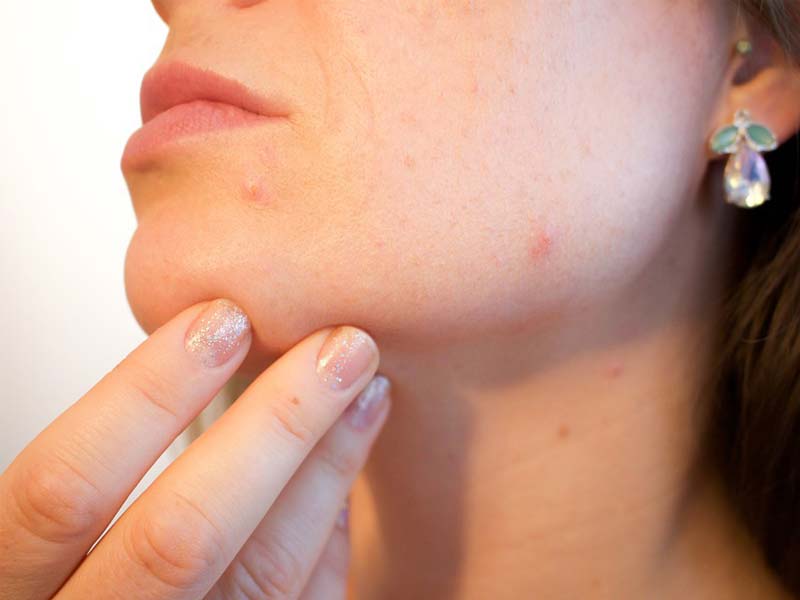
by administrator | Jan 22, 2019 | Skin Care
Acne. Possibly one of the most hated words in the English language. Almost everyone has had acne at some point in their lives, but what if you have more than just a small breakout here and there? What if you constantly have to deal with the discomfort of a red, inflamed face? Having worked with people who have gone through years of different acne-taming regimens, we’re here to tell you that though it can be difficult, there are severe acne treatment options available that work.
How Do I Get Acne?
Many people believe that taking good care of their skin by eating right, drinking enough water, and washing their face at night will be enough to prevent acne. Though these methods are important and do benefit certain people, they aren’t always effective on their own.
Sadly, there seems to be stigma around acne as a symptom of someone being “unclean”. That, simply put, is false. Most people who suffer from acne – and not exclusively severe acne either – are genetically predispositioned to have it. So, when you read about or hear people recommend making a simple lifestyle change to treat your blemishes, know that:
- For many people, it’s not that easy and…
- You ARE NOT “unclean”; you just need a medically guided treatment to help you clear your skin.
In addition, men tend to be more likely to have severe acne than women during adolescence. However, women are more likely to develop adult-onset acne. Other than the face, acne is commonly located on the neck, back, or buttocks.
What Kinds of Acne Are There and How Do I Know if Mine is Severe?
Generally speaking, there are 6 kinds of acne of increasing severity which are:
- Blackheads
- Whiteheads
- Papules
- Pustules
- Nodules
- Cysts
Most people have had a blackhead or a whitehead in their time. Most people have even had a papule or pustule thrown in, much to their annoyance. However, severe acne is classified as nodulocystic acne or severe inflammatory acne. These kinds of outbreaks tend to last much longer than the average blackhead or pustule. A single pimple of this category, either nodules or cysts, can stay on your skin for weeks or months at a time.
A nodule is a hard, swollen lesion that unlike simpler pimples, develops deep within the skin and can last as long as a couple of months. A simple pimple begins when an infected hair follicle wall (commonly called a pore) ruptures. When this happens, bacteria has free access to the dermis, which is the deepest layer of the skin. That’s how your average whitehead develops.
In the case of a nodules, the follicle wall in question ruptures deep within the dermis, not just near the top. This causes the follicle bacteria to infect follicles next to it. The result is a deep, painful, hard nodule on the skin. They are often described as feeling like a knot. A nodule can be filled with pus, much like an average pimple, but the fluid will be located deep under you skin and unlikely to make a whitehead.
Nodules can last anywhere from a few weeks to months at a time. Because of the extensive underground damage, they are much more likely to scar than a regular pimple. In addition, over the counter topicals will not help this type of acne. You must see a dermatologist to prescribe you an oral medication that fights the acne from the inside.
A cyst, on the other hand, is essentially an elevated nodule blemish. Cystic acne obliterates the originally infected follicle and slowly works its way to the surface, often filled with pus or blood. These pimples can be incredibly swollen and can measure up to a couple inches long or wide. Because they are essentially a more infected nodule, they typically last longer and the likelihood of scarring is very high.
Nodule and cystic acne can only be treated by a professional and under no circumstance should you try to pop either of these kinds of blemishes.
What Are My Severe Acne Treatment Options?
For those of you who have determined that you do have severe acne, there are many medications and regimens you can try to tame your breakouts. The most effective medication on the market for severe acne treatment is Isotretinoin, more commonly known as Accutane. However, this medication requires that you have a dermatologist or doctor whose credentials allow them to prescribe it to you.
Isotretinoin is a retinoid taken orally twice a day with a meal. The treatment generally lasts 15-20 weeks, depending on the severity of your acne. This medication is highly controlled because of its lasting effects and possibly detrimental effects on the body. In fact, the only way a person can take Accutane is if they also agree to participate in a program set up by the Food and Drug Administration called iPledge.
Women and Accutane
iPledge is set up primarily for women who want to take Accutane because of the severe birth defects it can cause if the woman were to be pregnant. In fact, two months before starting the therapy, women must have two blood tests done to ensure that they are not pregnant. During the course of treatment, women must have a blood test done each month to continually ensure that they are not pregnant.
Each month, the medication must be re-prescribed only after bloodwork comes back negative and the female patient has taken an online quiz through iPledge stating that they are on at least two methods of birth control.
Men have it much easier, as they do not have to go through the process of proving that they are not with child each month.
How Accutane Works
Put simply, Accutane permanently shrinks your oil glands. Because people with acne produce more sebum than necessary, the elimination of the excess causes your skin to stay clear because your pores no longer get clogged.
The pill works from the inside and essentially dries out the body (see side effects below). While on this medication, your skin is likely to get worse before it gets better. It may not be until month two or three that you start notice a significant difference in your skin.
Because it shrinks your oil glands, a wonderful side benefit of this medication is that, even when you’re done with it, your hair will never get as greasy as fast. How nice is that?!
Common (Not Serious!) Side Effects
Now, we know this description of Accutane can scare some people. It is a serious medication! Though it’s more of a process than using a simple topical cream, the difference is that it will work as a severe acne treatment, when over the counter medications just don’t cut it.
Whether male or female, while on Isotretinoin, you’ll have to take a little better care of yourself. The most common side effects include:
- Dry skin (especially your lips)
- Nosebleeds
- Dry eyes
- Joint pain
- Sun sensitivity
Because Accutane is actively shrinking your oil glands, while taking the medication, your skin will be extremely dry. Your lips and nose in particular will be extra dry. Below, we’ve highlighted some extremely helpful products to keep your skin comfortable and moisturized.
- Aquaphor or Vaseline – exclusively!
- Most brands for dry lips actually don’t help you – including Chapstick. Aquaphor and Vaseline are essentially the ONLY brands you should trust on your precious lips.
- Non-Comedogenic Products
- Check the labels on any makeup or moisturizer you want to buy for the word “non-comedogenic”. This means that it’s specifically formulated to not clog pores and cause oil backups.
- Cetaphil or CeraVe Moisturizers/Lotions
- These brands are excellent choices for acne prone, sensitive, and extra dry skin. There are many different kinds to choose from, but these brands are guaranteed to nourish your dry skin.
Though it may sound intimidating, Isotretinoin is the most effective way to rid your skin of severe acne. Acne can is frustrating and embarrassing to deal with, and for those of you who feel like you’ve tried everything under the sun, Accutane may be the best option for you. If you have severe acne, Camas Swale Medical Clinic offers Accutane treatments. For more information, contact us here.

by administrator | Nov 14, 2018 | Healthy, Skin Care
Several generations ago it was common for parents to lay their undressed infants out in the sunshine every day for good health. Our modern minds tend to think, “That’s crazy! Did they slather on sunscreen first?” Although it may not be how we would go about it today, in reality, these parents helped their children get proper vitamin D amounts.
Vitamin D deficiency is an epidemic in the United States; estimates have it affecting as many as 90% of some American adult populations. This is a serious health problem that needs to be addressed.
What Does Vitamin D Do?
Actually considered a hormone, vitamin D is different from the majority of other vitamins since our bodies can make most of what we need, rather than having to rely on food to receive enough of it.
Vitamin D is often referred to as the “sunshine vitamin” since it is made when our bodies change sunlight into chemicals to be used by the body. When UVB rays hit our skin, a substance in our skin changes into D3 which then moves through the bloodstream into our kidneys and liver.
Vitamin D is fat-soluble and resides in the body’s fatty tissues and the liver. It is an essential nutrient for overall health, and research suggests that deficiency can lead to brittle bones, breast cancer, colon cancer, autoimmune disorders, high blood pressure, and heart disease.
How Do We Get Vitamin D?
Exposure to sunlight is the primary way our bodies make vitamin D, and with proper exposure, we can make adequate amounts. However, with the rise in skin cancer over the past decades, many people now wear sunscreen, limiting the opportunity for the skin to do its incredible sunlight conversion.
Balancing the need to get enough vitamin D with the need to protect our skin from damage is tricky. And there isn’t a precise amount of sunlight that doctors can point to as the ideal amount for vitamin D production because it can vary from person to person. In general, experts suggest 10-20 minutes of sun exposure each day, but even this is highly variable depending on the person and their location.
People with darker skin make less of the nutrient than those with fair skin. Young people produce more than older people. And those in the United States who live north of Atlanta will find it almost impossible to get enough UVB exposure during the winter, regardless of how willing they are to go without sunscreen.
5 Symptoms of Vitamin D Deficiency
Blood work ordered by your doctor is the only way to diagnose low vitamin D levels, but here are some signs to watch for and to discuss with your provider:
- Frequent illnesses and infections. We have vitamin D receptors throughout our bodies, including on our immune cells. One of vitamin D’s primary roles is to help our bodies fight off infections. If you find that you are very susceptible to colds, cases of flu, and respiratory infections, you may be low on this vital nutrient.
- Muscle and bone pain. Vitamin D is well known for its role in preventing osteoporosis, as it helps with the absorption of calcium. But it also appears to have anti-inflammatory properties as well. If you are battling chronic bone, back, or muscle pain, you may need to boost your D levels.
- Chronic fatigue. It is easy for adults to ignore their constant feeling of tiredness and chalk it up to being older and busier. And even when patients pursue the cause of their chronic fatigue, vitamin D deficiency is often overlooked. But research shows that extremely low levels of this nutrient lead to chronic fatigue and tiredness.
- Hair loss. This is a symptom that many people quickly attribute to stress. While it’s true that stress can be a cause of hair loss, vitamin D deficiency is worth consideration. Low levels are linked to the autoimmune disorder of alopecia areata in which patients experience extreme hair loss over the whole body.
- Depression. There are vitamin D receptors in the part of the brain that impacts the development of depression, so a deficiency in the nutrient may lead to this mental health disorder. Research in countries such as Norway and Sweden suggests a strong link between low levels of D and depression.
5 Foods That Are High in Vitamin D
Since most of us are unable or unwilling to have adequate unprotected time in the sun for vitamin D production, that leaves food sources as the next option. Here are five foods that will boost your levels:
- Fatty fish. Because vitamin D is a fat-soluble vitamin, it requires some fat to be usable. Fish such as salmon, tuna, herring, and sardines are excellent sources of vitamin D. As a bonus, these fish are full of protein and healthy fats, too.
- Beef Liver. Although organ meat usually is not high on many people’s lists of favorite foods, it is incredibly nutrient-rich, and a fantastic source of vitamin D. In addition to providing high levels of D, beef liver is also rich in iron, making it a powerhouse, nutritionally.
- Egg yolks. Eggs get high praise as being good sources of protein, but they also hold a great source of vitamin D in their yolks. Sadly, egg yolks spent a lot of undeserved time on the western world’s naughty list of foods, due to concerns over cholesterol. Fortunately, that phase has passed, and we now recognize the tremendous health and nutritional benefits of eggs.
- Fortified foods. Many foods such as cereals, oatmeal, milk, and orange juice are fortified with vitamin D. Although these items are not as efficient at delivering the nutrient as other food sources, they are helpful in addressing deficiencies in the population, especially among children.
- Shellfish. Shrimp and oysters are both low-calorie sources of vitamin D, making them a great part of a healthy diet. Oysters have the bonus of being rich in B12 as well.
At Camas Swale we are committed to helping you live the healthiest life possible. If you are noticing any of the above symptoms, contact us today to schedule a time to come in for a visit. We will work to get you back on the road to vitality and good health.
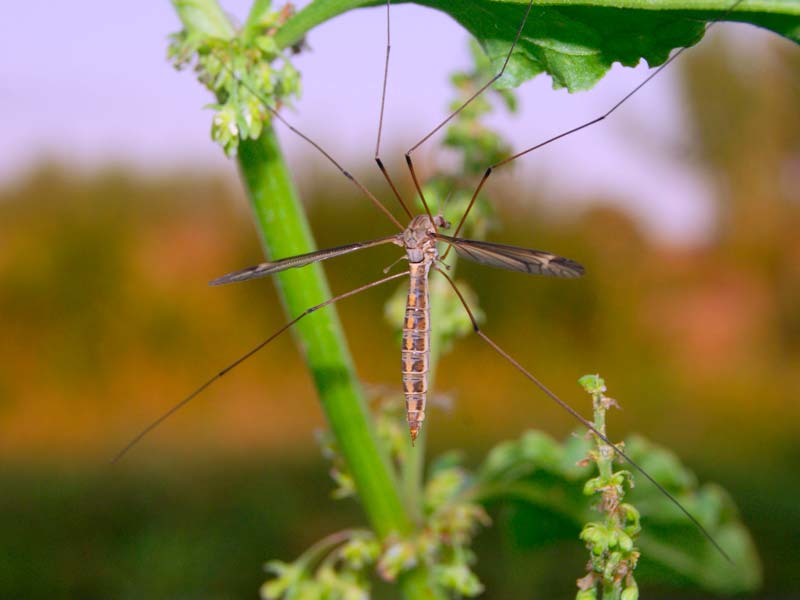
by administrator | Jul 26, 2018 | Skin Care
Summertime barbecues, short sleeves, and spending time with friends and family by the water on a river or lake are some of the best things about Oregon summers. With ready access to coastal areas and cascade high lakes, outdoor recreation opportunities abound. Unfortunately, when you arrive at your destination, you may find that you’re not alone. Those darn mosquitos take no prisoners, and no one likes coming home to see they’re covered in itchy mosquito bites and welts after a day out. So what can be done, and what is the best mosquito repellent out there?
There are some steps you can take to prevent yourself and your friends and family from becoming a movable feast for the multitude of insects that also call this part of the country home- and yes- the best mosquito repellent regime consists of two essential products so read on to learn more.
Step 1: Stay Where There’s a Breeze
When it comes to flying insects, take advantage of areas that have a light breeze. Mosquitoes are not particularly strong flyers, and even a slight breeze may be enough to ground their activity. Avoid peak feeding times such as dawn and dusk if there is no breeze to keep airborne pests at bay. For fishers in waterways without a breeze, a mosquito head net can make the day much more enjoyable.
Step 2: Use the Best Mosquito Repellent Out There (and its friend)
The next phase of prevention involves some planning. Most of us are familiar with DEET- containing insect repellents, and these do work well if applied to the skin according to the manufacturer’s directions. How they work is they confuse the mosquitos which cause them to avoid you, hence the urge to avoid you and your family.
Say Hello to DEET-Containing Repellents Little friend, Permethrin
DEET does not, however, work well on clothing. For this, permethrin is superior. You can treat an outfit at the beginning of the summer, let it line dry, and it will repel all manner of biting insects for about six washings. A combination of these two treatments can reduce the number of bites to zero even if a whole cloud of mosquitoes has decided to crash the party.
Are DEET-Containing Repellents the Best?
Yes, the best mosquito repellent will have DEET present. While many myths are surrounding DEET, the truth is that it’s perfectly safe when used correctly and that it is in the best kind of mosquito repellent.
For more information about DEET-containing repellents head on over to the CDC’s PDF about DEET. (https://www.cdc.gov/malaria/toolkit/DEET.pdf)
Why Insect Repellent is Important
From a medical standpoint, insect bites can be a concern not just for the irritation and inconvenience they cause but also due to the potential for vector-borne illness in the form of viruses and parasites carried from host to host.
Although malaria is not known to be present in this region, there are a number of significant viruses that can cause illnesses-particularly in patients that are immune compromised or pregnant. Even without disease transmission, the local tissue reaction from the bite and break in the skin can create an entry point for infection present in the environment or on the skin surface. This may, in turn, lead to a cellulitis or abscess that may require medical treatment with antibiotics or even surgical evacuation of the wound.
Signs and symptoms that may indicate advanced treatment is warranted could be
- Fever
- Nausea
- Drainage of yellow liquid from the site
- Heat or warmth at the site of the bite, or
- Unusual swelling or rash appearance that is not disappearing within a few days.
For travel outside the local area, insect-borne diseases can be a much more significant threat depending on the destination. A great place to start researching for any travel, especially outside the United States, is the CDC website. Here, you can find information on travel advisories, risk assessments, and vaccine and prophylaxis recommendations.
Don’t forget always to use our tried and true mosquito repellent regime while you’re enjoying the outdoors!

by administrator | Jul 2, 2018 | Skin Care
It’s the time of year again, where we kiss the rain and short days goodbye and say hello sunshine, flowers, and wearing sunscreen.
For Oregonians, emerging from hibernation and enjoying more extended daylight hours is a much-anticipated time of year filled with making great memories with family and friends. It’s almost as if you can feel your mood and energy improving, like being plugged into a solar charging station.
So most of us here in Oregon, understandably so, take a sigh of relief in knowing most of the skin cancer diagnoses are found in Hawaii and Florida, right?
Not so Fast Dreamers
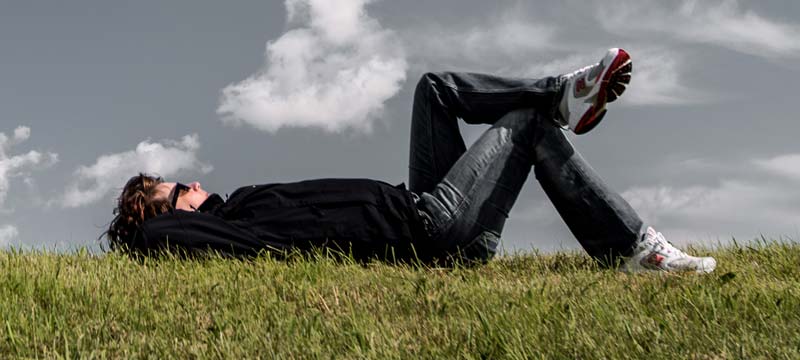
Though most people think of Florida and Hawaii as being high risk due to the sun, demographics show that there is a significant risk in temperate climates despite less total sun exposure to the regions with the Pacific Northwest showing one of the highest rates of new diagnoses.
Yeah, our great Pacific Northwest shows one of the highest rates of new skin cancer diagnoses in the country. Sneaky skin cancers.
However, don’t fret. We’re going to go over the good things about the sun, and how to enjoy that all safely.
Benefits of the Sun

For once, the medical opinion agrees. Studies have shown that Seasonal Affective Disorder (SAD) can make depression worse, and with decreased Vitamin D levels comes decreased resilience and coping skills for daily stressors.
That means it’s great to get outside and soak up all that sun. Here are just a few benefits of the sun:
- Increased Vitamin D levels
- Stronger Bones
- Improved Brain Function
- Overall happier mood (which we can all agree on, yes?)
Don’t forget though, while you’re out enjoying Creswell’s backyard, to please remember the importance of wearing sunscreen.
Why It’s Important to Wear Sunscreen
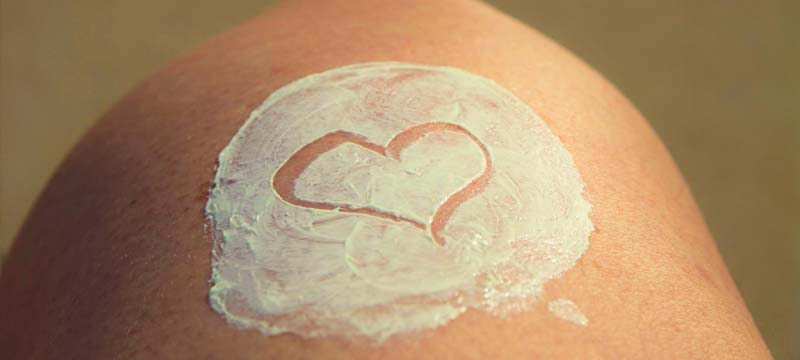
First off, wear sunscreen, please. Moreover, do so consistently. SPF 30 or higher, water and/or sweat resistant for swimming or vigorous physical activity. Also, a hat. And long sleeves if it is not too hot. And sunglasses. Not at all kidding here.
Reapply sunscreen every 2 hours. No whining.
But why, you ask? What about that bronzed sun-kissed skin tone you were looking forward to all winter?
The short answer is that skin damage is cumulative and does not repair nearly as well as we once thought. Most of us have or will have an estimated 80 to 90% of our lifetime skin damage, mostly from sun exposure, before we are 21.
Did you read that? 80 to 90% of our lifetime skin damage is damaged before we are 21.
This is because we think we are indestructible until about that age, and also because most of us spend more time in our youth at lakes, parks, beaches, etc. before we spend the rest of existence in an office staring at a computer somewhere.
So, What Does Cumulative Sun Damage Mean?
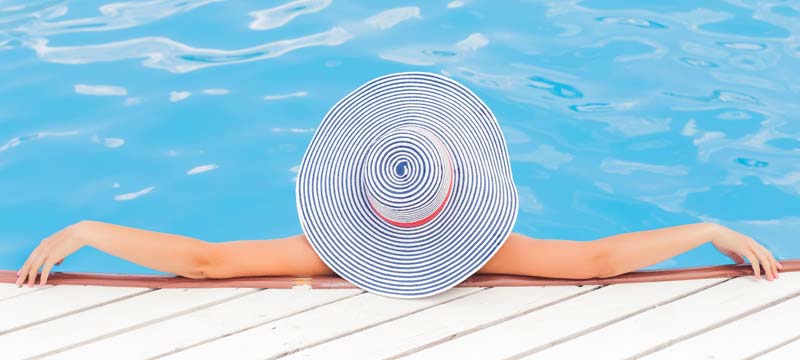
It all adds up, that time in the sun. It means to be kind to your 45-year-old self if you are 21 because that beautiful tan today means more crow’s feet, wrinkles, and decreased skin elasticity in the future.
And oh, by the way, increased the risk for skin cancer.
Although much more common in fair-skinned people, skin cancers-particularly melanoma-can show up at any age and with any skin type. Family history plays a role so if you have a mom, dad, brother or sister with a history of melanoma specifically, you should have an annual skin survey with a dermatologist or family practitioner knowledgeable about skin conditions.
Melanoma

Melanoma, while uncommon, is a fast-growing type of skin cancer that can metastasize elsewhere in the body quickly, even when the primary site is relatively small and innocent in appearance.
Squamous Cell Carcinoma
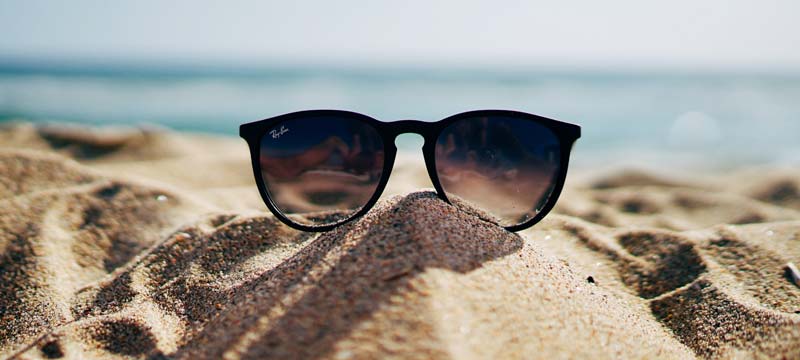
Although Melanoma is the most concerning, more common is Squamous Cell Carcinoma (SCC) of the skin-a slower growing type of skin cancer that exists on a continuum from premalignant dry red, scaly plaques called actinic keratosis; an intermediate phase known as Bowen’s disease; and formal skin cancer.
SCC is almost always related to radiation (sun) exposure and tends to come later in life. Treatment usually happens in a couple of ways like:
- Removal or,
- Destruction with liquid nitrogen or topical chemicals depending on how advanced it is.
Basal Cell Carcinoma (BCC)
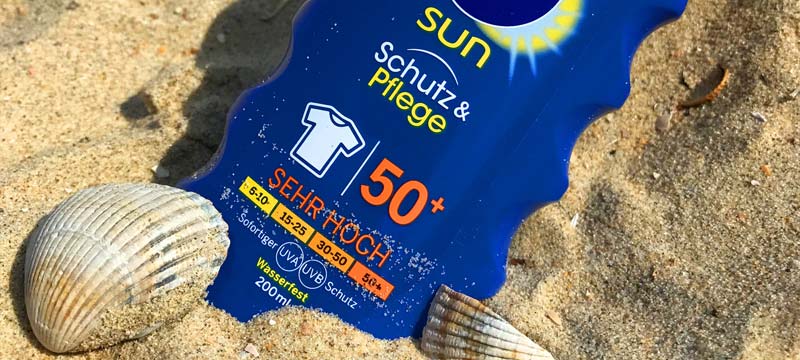
The final type of skin cancer of frequent clinical significance is Basal Cell Carcinoma (BCC) and is also related to radiation damage from the sun or other sources. It tends to have shiny rounded margins, but this is not always the case.
The good news with this type is that it almost never goes elsewhere in the body. Its primary threat is that it frequently comes back unless excised with wide margins because it also has more local site involvement than is typically visible to the clinician. BCC tends to be more of a cosmetic issue, cropping up frequently on the face, nose, and ears.
Enjoy the Sun, and do it Wearing Sunscreen

Did you know that regular (and daily too) use of an SPF 15 or higher sunscreen can reduce risk of developing melanoma by 50 percent, according to the American Cancer Society?
So enjoy the summer, but forego the tan. Instead, treat your skin to a good daily moisturizer and application of SPF 30+ sunscreen. That way, your skin has a better chance to continue looking beautiful and doing its job for decades to come.
















